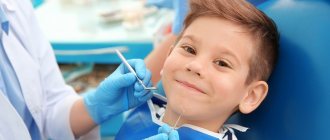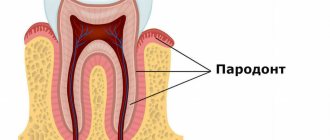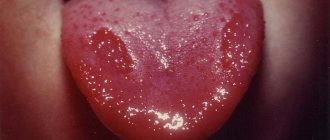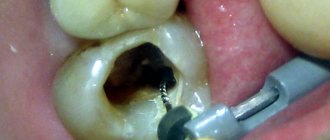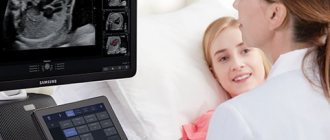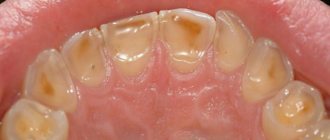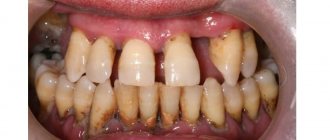Almost everyone is familiar with a “cold” on the lips. As soon as you catch a runny nose or get nervous, an unpleasant harbinger immediately appears - a tingling sensation somewhere around the mouth.
The herpes simplex virus is present in the body of 95% of people. And only a few have immunity, the reasons for which are still unclear.
The virus enters the body in early childhood: at 3–4 years, when the antibodies against the herpes virus transmitted to the baby by the mother are depleted. Most often, infection occurs if a child is kissed by carriers of the infection. In addition to a kiss, the virus can enter the body, for example, with saliva. It penetrates the mucous membranes, reaches the nerve endings, rises into the cranial cavity, where it “hides” in a nerve plexus called the trigeminal ganglion and “sleeps” there until it is reactivated.
Herpes “wakes up” when immunity decreases
Causes of recurrence of herpes on the lips: stress or emotional distress; various other diseases, in particular colds, flu, diabetes, HIV; poisoning or intoxication; drinking alcohol, caffeine and smoking; excessive ultraviolet radiation; hypothermia or overheating; onset of menstruation; overwork and exhaustion; poor nutrition/diet or stomach upset; other factors individual to each person.
After “awakening,” the virus travels back to the skin. As the virus moves through a nerve, it causes inflammation of the nerve tissue.
The development of herpes can be divided into several stages. At the first stage, the person feels unwell. At the site where the “fever” appears, there is pain, tingling, and the skin turns red. At the inflammation stage, a small painful blister filled with fluid forms. After some time, the bubble bursts and a colorless liquid containing billions of viral particles flows out of it. An ulcer appears in its place. At the final stage, the ulcer becomes covered with a crust.
Most often, herpes appears on the lips, but lesions can also appear on the face, in the ears or in the mouth.
Indications for use
Acyclovir is indicated for the following diseases:
- infectious lesions of the skin and mucous membranes caused by the herpes simplex virus (primary and recurrent genital);
- chicken pox;
- shingles;
- herpetic lesions in children in the first month of life (including intrauterine infection);
- prevention of cytomegalovirus infection in patients who have undergone bone marrow transplantation;
- herpetic lesions of the cornea of the eyes (for eye ointment);
- Epstein-Barr virus infection.
What to do if you have a “cold” on your lips
At the moment, no drugs or treatment methods have been developed that would completely destroy the herpes simplex virus in the human body. But we can give some advice to those suffering from herpes.
- Strictly follow the rules of personal hygiene! Since herpes is contagious, it is necessary to wash your hands with soap and use separate utensils and towels.
- Don't put your hands near your eyes! And do not wet your lenses with saliva! Herpes can affect the mucous membrane of the eye.
- It is not recommended to touch the viral rash or kiss. The virus can be transmitted by wearing one lipstick or smoking one cigarette.
- If you try to remove a blister or scab over a sore, the virus can spread to other parts of the body.
- Avoid oral sex! The virus from the affected lips can cause genital herpes in a partner.
- A young mother must also take certain precautions to protect her baby from contracting herpes. If you have herpetic rashes, you must wash your hands with soap and water every time before touching your child. And under no circumstances should the affected surface come into contact with the child’s skin.
Diagnostics
Diagnosis includes visual inspection of the patient's clinical manifestations if an exacerbation is typical. The diagnosis of HSV infection is often based on clinically characteristic lesions. Laboratory confirmation may be necessary if the infection is severe, the patient is immunocompromised, or the patient is pregnant, and the lesions are atypical. Depending on the severity of the clinical picture, a number of necessary auxiliary diagnostic procedures are performed:
- a set of standard laboratory tests (general blood test, urine test, etc.);
- serological tests (ELISA) to detect antibodies to a specific type of virus in the patient’s blood;
- PCR analysis is a highly informative diagnostic method that allows you to detect the presence of a virus in the body with up to 99% accuracy.
Herpes simplex virus must be distinguished from herpes zoster, which rarely recurs and usually causes more severe pain and larger lesions that are distributed along the dermatome and usually do not cross the midline. It should also be noted that collections of vesicles or ulcers on an erythematous basis are uncommon in genital lesions other than those caused by HSV infection.
How to minimize discomfort
You should start using antiherpes medications as soon as you feel a tingling sensation. Medicines will not get rid of the virus, but they will stop its development and speed up recovery. There are drugs that prevent the development of the virus: tablets, ointments for external use, which help heal blisters and ulcers and reduce discomfort.
When applying the ointment, use cotton swabs to avoid transferring the virus from your lips to the skin of your fingers.
Herpes requires the attention of specialists! A “cold” on the lips can be a symptom of serious diseases: a sharp decrease in immunity, cancer, HIV infection.
If you are suffering from relapses of herpes, consult a doctor. A specialist will not only save you from unnecessary worries and eliminate health hazards, but will also help you choose a comprehensive program for the prevention and treatment of herpes.
In order to make an appointment with an immunologist or dermatologist for a program for the diagnosis and treatment of herpes, call the Family Doctor clinic (clinic hours: Mon-Fri from 8.00 to 21.00, Sat-Sun from 9.00 to 20.00), or sign up for reception and diagnostics via online registration form
Modern approaches to the diagnosis and treatment of herpesvirus infections
Herpesvirus infection is one of the most socially significant diseases, which is due to the high human susceptibility to herpes viruses and the annual increase in the number of patients with herpesvirus infections both abroad and in Russia, outpacing the natural population growth [1, 4, 16]. According to serological survey data, about 90% of the entire world population is infected with one or more serotypes of the herpes simplex virus (HSV). Over the past 5 years, the increase in registered cases of certain forms of herpesvirus infection is 90%, and the increase in infection is typical in the group of people aged 20–40 years. Recurrent forms of the disease affect 25 to 30% of infected people; in 30%, the infection is found in a subclinical and latent form. Features of the modern course of herpesvirus infection are the long-term recurrent nature of the disease, often an atypical clinical picture, and the emergence of pathogen strains resistant to standard drugs [2, 12].
An analysis of the annual incidence in Russia showed that genital herpes, according to state dermatovenerological institutions, is detected in 20% of the adult population. For the period 2000–2004. the incidence rate of genital herpes in Moscow increased 6 times, in the Moscow region - 2 times [4]. Genital herpes occurs in all population groups, the highest incidence is recorded in the age group of 20–29 years, but there is a second peak at the age of 35–40 years. Individuals who begin early sexual activity are at increased risk of developing the disease. Young people aged 15–19 years often develop genital herpes, which may be due to lack of awareness about urogenital infections and their prevention [11].
We believe that one of the reasons for the epidemic of the disease is poor diagnosis of subclinical or atypical forms of herpesvirus infection. In such cases, reactivation of the virus is observed less frequently than in recurrent disease with clinical manifestations. It has been established that after primary infection, the herpes virus migrates from the site of inoculation along the peripheral nerves to the spinal and cerebral ganglia, where it remains “dormant” and invulnerable to antiviral drugs. Under the influence of provoking factors, the virus is reactivated and migrates further along the peripheral nerves. In this case, irritation of the nerve endings occurs, leading to prodromal sensations in the form of tingling, burning or itching, the so-called precursors of vesicular rashes. However, asymptomatic production of the virus on the mucous membranes is possible, which is associated with insufficient local immune defense mechanisms. Consequently, the herpes virus can be transmitted during the period of clinical remission of a recurrent herpes virus infection. Such chronic viral shedding can cause infection of a sexual partner, newborns, and the development of neonatal herpesvirus infection [7].
The clinical picture of herpesvirus infection is diverse and depends on several factors [12]:
- characteristics of the HSV virus: type, antigenicity and virulence;
- gender, age and degree of immunocompetence of the patient;
- stages and phases of the disease (exacerbation or remission);
- severity and duration of the infectious process;
- the presence of concomitant diseases that affect the course of the infection;
- the presence of previously conducted therapeutic measures.
The primary episode of the disease is characterized by extensive vesicular and erosive-ulcerative rashes, severe general clinical symptoms and prolonged viral replication. In 80% of patients, typical manifestations of primary infection are preceded by local prodromal symptoms in the form of paresthesia, itching, pain, burning, regional lymphadenitis, as well as deterioration of the general condition (headache, fever, chills, myalgia, weakness, sleep disturbances) [7] . Then rashes appear on the mucous membrane and skin in the form of individual or grouped vesicular elements 2–3 mm in size on an erythematous background. Usually the rash is profuse, the blisters quickly burst, leaving behind erosions with irregular outlines or an ulcerative surface. As a rule, rashes tend to reappear in the same place.
The duration of the acute period of the disease ranges from 8–10 to 18–22 days. Clinical manifestations increase during the first week. Over the next 2 weeks, asymptomatic desquamation of the epithelium damaged by the virus occurs. Typical herpes simplex rashes during the primary episode are localized perioral in the area of the red border of the lips, wings of the nose, genitals, and gluteal region. Also, quite often, the primary episode of herpes virus infection can occur with damage to the oropharyngeal mucosa in the form of gingivitis, glossitis, stomatitis, and herpetic sore throat [4]. In immunocompromised patients (oncological diseases, HIV infection, taking glucocorticosteroids, cytostatics, radiation therapy), complications such as sacral radiculopathy, severe aseptic meningitis or disseminated infection requiring hospitalization are possible.
The clinical manifestations of relapse are shorter compared to the primary episode of herpesvirus infection; the duration of complete epithelization is only 5–7 days. With increasing duration of the disease and under the influence of therapy, the clinical picture of herpes simplex often changes.
In a typical course, the clinical picture of herpesvirus infection in most cases allows a correct diagnosis to be made without the use of additional laboratory and instrumental methods. Difficulties in differential diagnosis may arise with atypical forms of herpes simplex or other diseases characterized by similar skin rashes. Sometimes it is necessary to differentiate between herpes virus infection and scabies, traumatic lesions of the skin and mucous membranes, contact dermatitis, Dühring's dermatitis herpetiformis, streptococcal impetigo, pemphigus, bullous pemphigoid, fungal infections of the skin and mucous membranes, fixed toxicerma, Darier's, Behçet's, and Crohn's diseases.
With an atypical course, herpes simplex rashes in the affected area may bypass certain stages of development. Only erosion, papular elements and edematous spots against the background of erythema are preserved. With this form of herpesvirus infection, characteristic lesions on the mucous membranes and skin may be absent, only hyperemia and diffuse swelling are noted, and recurrent painful cracks occasionally appear on the mucous membrane. A recurrent form has also been described for genital herpes, which is characterized only by itching, and in some cases there are no subjective sensations [13].
Atypical herpes in the genital area can masquerade as some sexually transmitted diseases, such as syphilis. Differential diagnostic signs of herpetic eruptions in this case are: polycyclic outlines of lesions, less pronounced reaction of regional lymph nodes, absence of infiltrate at the base. Herpetic rashes in the genital area are differentiated from herpetiform chancre in primary syphilis, syphilides in secondary syphilis. When examining the discharge, there is no treponema pallidum.
The atypical form of genital herpes is often masked by a concomitant urogenital infection and is not always diagnosed by doctors. A frequent combination of genital herpesvirus infection with Chlamydia trachomatis, Ureaplasma urealyticum, Mycoplasma genitalium, Gardnerella vaginalis, Candida albicans, human papillomavirus types 16, 18, and cytomegalovirus has been noted. In addition, the accompanying urogenital microflora is a favorable background for recurrence of the disease [7].
Particular difficulties in differential diagnosis may arise when a herpes virus infection is combined with the above diseases. In such cases, a history of the disease and diagnostic tests (studies to identify virus antigens and antibodies to it) help make the correct diagnosis. The purpose of laboratory diagnostics is to determine the etiological factor (detection of the virion, genome or antigen of viruses) and dynamic monitoring of the course of the pathological process (dynamics of specific antibodies). Laboratory diagnostic data are often used to confirm the diagnosis of herpesvirus infection.
Modern methods for identifying HSV include detecting the virus by classical virus isolation on sensitive cell cultures using the immunofluorescent method (determination of ELISA antibodies) and the method of identifying fragments of viral nucleic acids (polymerase chain reaction - PCR) [4]. We believe that among the many laboratory tests for verifying HSV on the skin and mucous membranes, PCR is the most informative - detection of viruses and virions. The advantages of the method are direct determination of the pathogen (detection of specific DNA sections), high specificity (95–100%) and sensitivity (95–98%) - from 10 to 1000 genomic copies in the sample, high speed of obtaining analysis results.
To assess the activity of the viral process and the adequacy of the antiviral immune response, the most accessible test for widespread clinical practice is a test for determining the level of specific IgM and IgG for HSV types 1 and 2. There are peculiarities in the interpretation of this test. In a number of patients without clinical manifestations of genital herpes, only specific IgG to HSV increases. There is an opinion among medical practitioners that this is evidence of viral replication, and antiviral and immunomodulatory therapy is carried out to reduce the activity of the infectious process. This tactic is not entirely correct. In these cases, to verify the viral antigen itself, an additional PCR test is necessary. Negative PCR for HSV types 1 and 2 with an increase in specific IgG in patients without clinical manifestations of herpes virus infection indicates virus carriage and does not require additional examination and treatment. We insist on this provision, since often the first stage of laboratory diagnosis is the determination of specific antibodies to HSV types 1 and 2. With this analysis, many practitioners replace the identification of the herpes virus itself and justify the prescription of antiviral therapy by the detection of high titers of specific antibodies to HSV types 1 and 2. It is worth noting that today there are no clinically significant titers of specific IgG to HSV, and the level of their excess is also clinically uninformative. We believe that antiviral therapy is indicated only for patients with clinical manifestations of genital herpesvirus infection, and in their absence, only if replication of the herpes virus is detected by PCR.
In addition, during serological examination in some patients with the onset of clinical manifestations of herpesvirus infection, false negative results are possible. We studied a unique group of patients newly infected with HSV with initial clinical manifestations in the form of genital herpes. On the first day of the disease, we noted the formation of a primary early humoral response in 86% of patients in the form of the synthesis of specific IgM. On days 7–14, 26–47% of patients showed an increase in the level of specific IgG against the background of a decrease in specific IgM. However, by the 28th day of the disease, 38% of patients did not show seroconversion, i.e., the level of specific IgM and IgG did not increase. In 86% of these patients, a late humoral immune response was formed only after 2 months. The results obtained show that during the period of conversion of the early humoral response to the late one (by the 28th day), a “seronegative” zone is formed in 38% of patients. It is during this period that false-negative results of a study of specific humoral immunity are possible, which should not be regarded as the absence of HSV infection.
Thus, the diagnosis of herpesvirus infection and treatment tactics are based on anamnestic, clinical data and laboratory examination results.
Treatment of patients with herpes virus infection presents certain difficulties due to the lack of antiviral drugs that can completely eliminate HSV from the body, as well as due to the formation of disorders in the immune system with a high frequency of relapses. In addition, the reasons for the ineffectiveness of treatment are often the insufficiency of the therapeutic doses of drugs used by doctors to control the severity of the disease, a lack of understanding of the mechanisms of action of acyclic nucleosides, as well as the lack of personal contact between the patient and the attending physician.
Currently, all methods of drug therapy and prevention of herpesvirus infection can be combined into three main groups: chemotherapy (acyclic nucleosides), immunotherapy and combination therapy, including chemo- and immunomodulatory drugs.
In 1981, the drug acyclovir (Zovirax) was created and introduced into clinical practice. The mechanism of action of acyclovir is based on its high specificity for viral thymidine kinase, which phosphorylates acyclovir. The viral DNA polymerase mistakenly includes phosphorylated acyclovir instead of natural deoxyguanosine triphosphate into the terminal sections of new viral DNA, thereby interrupting the process of viral replication at any stage, and new generations of viruses are not formed. Currently, it is the most frequently prescribed antiherpetic drug and has already been used by more than 50 million patients [15]. In addition, new antiviral drugs of the same group have recently been synthesized and widely used: valacyclovir (Valtrex) and famciclovir (Famvir) [5]. According to studies, the bioavailability of antiherpetic drugs from the group of acyclic nucleosides increases as follows: acyclovir - 20%, valacyclovir - 54% and famciclovir - 77% [10].
There are two main ways to use antiviral chemotherapy drugs:
- episodic administration (as needed during exacerbations of herpesvirus infection);
- prolonged or preventive therapy.
In the first case, the drug is prescribed in a short course for 7–10 days. In the second, patients take the drug daily for several months or years, not only to stop a given relapse, but also to prevent subsequent relapses. We have studied various regimens for the use of acyclic nucleosides in patients with genital herpesvirus infection with a high frequency of relapses (table).
Clear advantages of high-dose therapy were evident when assessing the duration of relapse of genital herpes during treatment. Valtrex and Famvir in high doses reduced the time of relapse by more than 2 times compared to standard therapy (from 3.9 to 1.7 days). The effectiveness of acyclovir was slightly lower. Nevertheless, all of these drugs significantly reduced the time of clinical manifestations of relapse compared to the standard treatment regimen. Our studies have revealed the undeniable advantages of a high-dose therapy regimen, when against its background, already on the 3rd day, the intensity of itching, burning, swelling and hyperemia in the area of the rash significantly decreased.
The study showed that the duration of remission in patients with various forms of genital herpesvirus infection depends on the treatment regimen. With standard and high-dose treatment regimens with Acyclovir, Valtrex and Famvir, in the typical course of the disease the period of remission ranged from 0.8 to 1.6 months, in the atypical form - from 0.7 to 1.7 months. There were no statistically significant differences in the duration of remission with these treatment regimens. At the same time, the prolonged treatment regimen contributed to a significant increase in the relapse-free course of herpesvirus infection. Thus, in the typical form of the disease after treatment with Acyclovir, the period of remission reached 4.1 months, with Valtrex - 10.5 months, Famvir - 9.2 months, in the atypical form - 3.3 months, 7.1 months and 6.8 months, respectively. . Thus, the maximum relapse-free period was obtained with prolonged use of Valtrex and Famvir.
Currently, practicing physicians mainly use standard treatment regimens with antiviral drugs. Prolonged and high-dose treatment regimens are practically not used for the relief and prevention of repeated relapses of herpesvirus infection. Perhaps a barrier to such therapy is the lack of information about its effectiveness. In addition, prolonged therapy helps prevent relapses of genital herpes and thereby has a positive psychological effect on the patient. Unfortunately, poorly informed patients often refuse prolonged and high-dose therapy, expressing concerns about the safety of its use and the development of drug resistance.
High-dose and prolonged treatment regimens improve the quality of life of patients who, at a certain stage of treatment, begin to take a direct part in controlling the disease. Such therapy should be prescribed to patients with a high frequency of relapses, since repeated manifestations of the disease are stressful for them, which, in turn, provokes immunosuppression and contributes to the development of subsequent relapse.
It has been shown that asymptomatic viral shedding usually occurs in the first years after primary infection [15]. Therefore, during the first episode of herpesvirus infection, it is advisable to carry out high-dose therapy, which reduces the risk of transmission of the virus. As practice shows, at this time patients prefer quick and effective treatment. In addition, during this period, patients especially need specialist consultation and psychological support [9].
The patient’s lifestyle determines the choice of treatment tactics for genital herpes. For example, during periods of long trips with climate change, exams, and stressful situations, it is preferable to prescribe prolonged therapy to patients, which in this case is preventive and prevents the possible development of a relapse. An integral part of the treatment and prevention of the spread of HSV is an educational program. The doctor must inform the patient about the danger of spreading the infection, the prospects for treatment and the need for cooperation.
In patients with a high frequency of relapses, a so-called secondary immunodeficiency is formed with a violation of the humoral and cellular components of immunity, a decrease in the number and inhibition of the functional activity of natural killer cells and cells of the monocyte-macrophage series, and a violation of the production of interferon [14]. Such patients are advised to include immunocorrective drugs in the treatment regimen. At present, sufficient experience has already been accumulated in the successful use of interferons (Reaferon, Viferon, etc.), interferon inducers (Cycloferon, Amiksin, Kagocel, Ridostin, etc.), immunomodulators of various spectrums of action (Polyoxidonium, Galavit, Immunomax, Likopid, etc.) for treatment of recurrent herpesvirus infection [3, 6, 8]. However, the prescription of drugs aimed at correcting disturbances in the interferon system, stimulating cellular antiviral defense and strengthening specific antiherpetic immunity should be carried out taking into account the data of an immunological examination of a particular patient.
In conclusion, we will discuss four possible options for medical tactics depending on the results of examining patients for herpesvirus infection.
Option 1. An increase in the level of specific IgG, a negative result of a PCR test for HSV types 1 and 2 in a patient without clinical manifestations of herpes virus infection indicate a virus carrier and do not require additional examination and treatment. The patient is monitored dynamically and a course of antioxidant vitamins is prescribed.
Option 2. If HSV types 1 and 2 are detected during a PCR study in a patient without clinical manifestations of herpesvirus infection, the level of specific IgM and IgG should be assessed. A selective increase in specific IgM indicates primary infection. In these cases, standard antiviral therapy is carried out, after which control PCR is performed. Other immunological examinations are not appropriate. An increase in specific IgG and IgM indicates an enhanced immune response in reinfected patients. They also undergo standard antiviral therapy, after which a control PCR is performed. Dynamic monitoring is also carried out and antioxidant vitamins are used.
Option 3. An increase in the level of specific antibodies in a patient with clinical manifestations of herpesvirus infection and a low frequency of relapses (2-4 times a year) indicates an enhanced immune response and does not require further study of antiviral immunity. Standard antiviral therapy is recommended for such patients. For severe clinical manifestations, high-dose therapy is indicated. Dynamic observation and a course of antioxidant vitamins are carried out.
Option 4. In a patient with clinical manifestations of herpesvirus infection with a high frequency of relapses (more than 6 times a year) and elevated levels of specific IgM and IgG, an immunogram is performed. The subpopulation composition of cells, NK activity and the level of α- and γ-interferons are assessed. If violations in antiviral defense are detected, either prolonged therapy with acyclic nucleosides or standard antiviral treatment in combination with immunomodulatory drugs is carried out. It is necessary to exclude the provoking factor and prescribe a course of antioxidant vitamins. The presented options may not contain all possible situations for examining patients with herpes virus infection, however, they are a guide to action available to primary care practitioners.
Thus, an individual approach to therapy, taking into account the results of clinical and laboratory examination, provides adequate control of the course of herpesvirus infection and provides an advantage over standard treatment. For widespread implementation in clinical practice, it is necessary that such methods of examination and therapy are available to all segments of the population and correspond to the modern level of medical care.
For questions regarding literature, please contact the editor.
A. E. Shulzhenko , Doctor of Medical Sciences I. N. Zuikova Institute of Immunology, FMBF of Russia, Moscow
Analogs
Acyclovir analogs
Along with Acyclovir, patients with viral diseases are prescribed Remantadine. Is it possible to take Acyclovir and Remantadine at the same time? What's better? Remantadine prevents the proliferation of viral cells, strengthens the immune system, and is also used as a prophylactic during influenza epidemics.
Indications for taking Remantadine are:
- tick-borne viral encephalitis;
- flu;
- herpes type 1 and 2.
The drug can be used by children aged 7 years and older.
The main purpose of Acyclovir is the treatment of herpes, chickenpox and antiviral therapy. By integrating into the DNA structure of viruses, Acyclovir prevents them from multiplying and developing. If necessary, the medicine can be prescribed to children.
You should not take Rimantadine and Acyclovir at the same time, since both of these drugs are similar. Only the attending physician can accurately determine the required drug and calculate the dosage.
Preventative treatment
The question often arises of how to prevent such an unpleasant situation as the manifestation of herpes. What should be the prevention? The recommendations are simple:
- Get vaccinated every three years to avoid infection or recurrence of the disease;
- Take acyclovir as a preventive measure when the disease may be triggered. Consult your doctor to determine your risk factors;
- Don't forget about hygiene;
- Strengthen your immune system: lead a healthy lifestyle, eat right and move more.
Acyclovir against herpes
Interaction with other drugs and alcohol
Acyclovir and alcohol
When a doctor prescribes a particular drug, the question arises about compatibility not only with other drugs (more on this below), but also with alcohol. After all, a cold often appears at the wrong time, but plans are made to attend an event where there will be strong drinks. What to do in such a situation? Despite the absence of direct contraindications, alcohol and medicine are incompatible.
It is not recommended to take Acyclovir with alcohol
Firstly, alcohol, by suppressing the activity of leukocytes and the production of antibodies, reduces the body's defenses. Secondly, any drug puts a strain on the liver and kidneys, and alcohol has a similar effect. And when the liver cannot cope with processing, enzymes are released that suppress the action of Acyclovir. That is, the effect of the immunomodulator will be zero. Also, this can provoke intoxication of the body and increase the risk of side effects such as nausea and vomiting; convulsions, disturbances of consciousness; tremors and hallucinations; allergies (itching, skin rashes, urticaria, angioedema); loose stools; anemia; shortness of breath, pain in the sternum, increased heart rate; disorders of swallowing and respiratory functions; cephalalgia, dizziness, drowsiness.
If you suffer from a hangover after drinking, this is not the right time to take Acyclovir. When a hangover occurs, the body is already under stress. Taking the drug may cause a deterioration in your general condition.
Acyclovir and antibiotics
It may happen that Acyclovir is taken at the same time as antibiotics. When treating viral diseases, simultaneous use of antibiotics is not recommended, as they will simply interfere with each other. That is, treatment will be ineffective either from Acyclovir or from another drug. The one-time use of medications will not speed up the patient’s recovery, and the liver will not say “thank you” to you, since it creates an additional load, which can lead to negative consequences. In exceptional cases, as prescribed by a doctor, a one-time dose is possible, but it is associated with risks. Be sure to consult with your doctor.
Treatment methods
There is no single way to quickly cure the virus: herpes occurs differently in different people. The treatment method depends on the strain, location of the affected area and other factors. At Polyclinic +1, doctors select a suitable herpes treatment regimen for each patient. Comprehensive treatment of infection with drugs prescribed by a doctor gives quick results.
Creams and ointments
The most popular drug is Acyclovir. It is available in the form of a cream or ointment with an active ingredient content of 5%: Acyclovir-Sandoz, Zovirax, Acyclovir-hexal. For treatment, it is better to use creams rather than ointments. Creams are better absorbed into the affected areas. The drugs must be applied to the affected area five times a day for seven days.
Despite its prevalence, acyclovir is considered an obsolete drug. It copes poorly with relapses of the disease, eliminates symptoms, but does not suppress the virus inside the body. In 30% of patients, treatment with acyclovir does not produce results.
A more modern drug is penciclovir. Fenistil Pentsivir is manufactured on its basis. This cream contains propylene glycol + cetomacrogol. They accelerate the penetration of the active substance into the skin. Only 0.2% of strains are resistant to Fenistil Penciclovir. The reproduction of the herpes virus stops on the second day after applying the cream, making the healing process faster. But the drug has a drawback: it is not suitable for children under twelve years of age.
Pills
When a treatment regimen for herpes in adults is drawn up, drugs can be prescribed in tablet form. The use of potent tablets is permitted for the treatment of adolescents over twelve years of age. When treating young children, parents should use the Viferon ointments and suppositories listed above.
The action of acyclovir in tablets is similar to the action of the ointment of the same name. The tableted drug is inexpensive and available in almost every pharmacy. It is approved for use in the treatment of children under twelve years of age.
Valaciclovir is used to synthesize acyclovir. It is contained in the drug Valtrex. When the tablet enters the body, valacyclovir is converted to acyclovir. This technique increases the concentration of the drug in the body. The effect of taking valacyclovir can be compared with intravenous administration of acyclovir. It is suitable for people with normal immunity.
Famciclovir is the most effective medicine for herpes. After administration, famciclovir is almost completely absorbed and quickly turns into active penciclovir, which allows you to get rid of symptoms and suppress the activity of the herpes virus. Famciclovir is contained in the drugs Famvir and Favirox. A single dose of three tablets is allowed to quickly stop inflammation. Famciclovir is suitable for adults with weak immune systems.
Folk recipes
Traditional recipes help eliminate the symptoms of the disease, but do not fight the herpes virus as the cause. Here are examples of common recipes:
- Apply lemon balm essential oil to the affected area every two hours.
- Lubricate the area of inflammation with Kalanchoe juice three times a day.
- The affected area can be lubricated with crushed garlic cloves three times a day. If garlic causes a burning sensation, you should choose a different recipe.
- A mixture of bee honey and apple cider vinegar, taken in a ratio of 1 to 1, can be applied to the inflamed area. Treat the skin three times a day.
We do not recommend treatment solely according to traditional recipes. To eliminate symptoms and suppress the activity of the herpes virus, use medications prescribed by an experienced doctor.
Acyclovir during pregnancy
A pregnant woman's immune system is weakened and may be susceptible to viral infections. Therefore, expectant mothers and those undergoing lactation are asking the question, “Is it possible to use Acyclovir during pregnancy?” According to the instructions, the use of acyclovir during pregnancy is permissible, but with caution. Moreover, this formulation means that use is possible, firstly, only as prescribed by a doctor, and secondly, only when the therapeutic effect is greater than the risk. This applies to all dosage forms. As for the lactation period, the drug passes into breast milk. Therefore, first consult a doctor, and then take the drug. In case of negative reactions, it is necessary to change therapy or stop breastfeeding for a while.
Is it possible to use Acyclovir for a cold?
Acyclovir can be prescribed for ARVI
Acyclovir successfully fights herpes viruses, but sometimes a therapist prescribes Acyclovir for ARVI. Why? It is no secret that with ARVI and colds in general, the immune system is weakened, and this is fertile ground for the manifestation of herpes, which, against the background of the same ARVI, does not alleviate the situation. Although Acyclovir is ineffective in the fight against viruses that cause respiratory diseases, it is used as a prophylactic agent to prevent the development of herpes.
